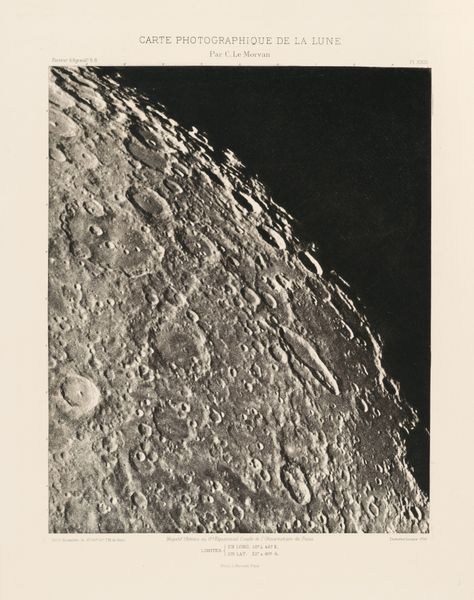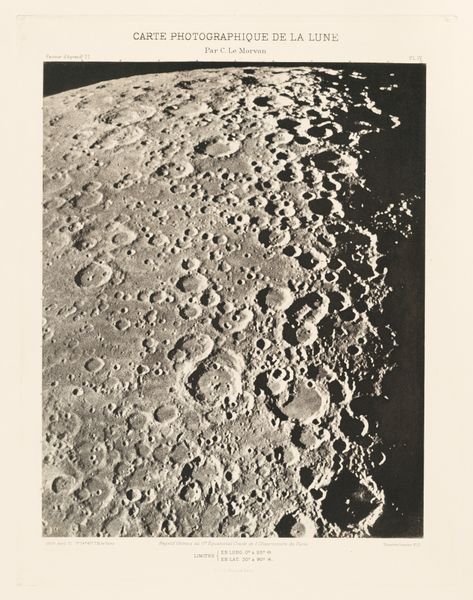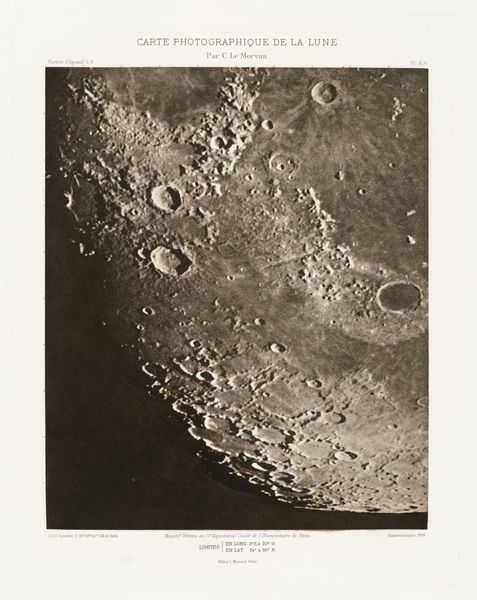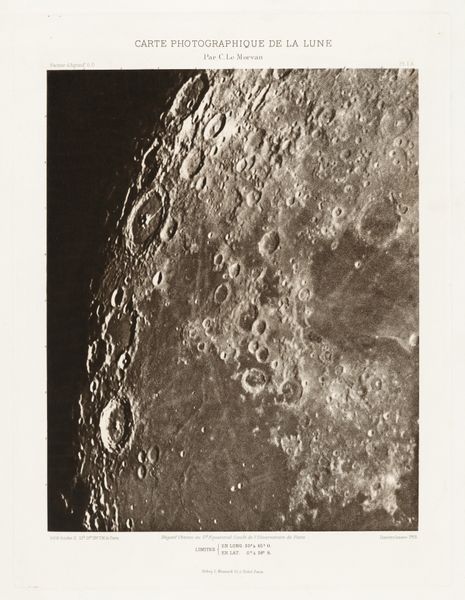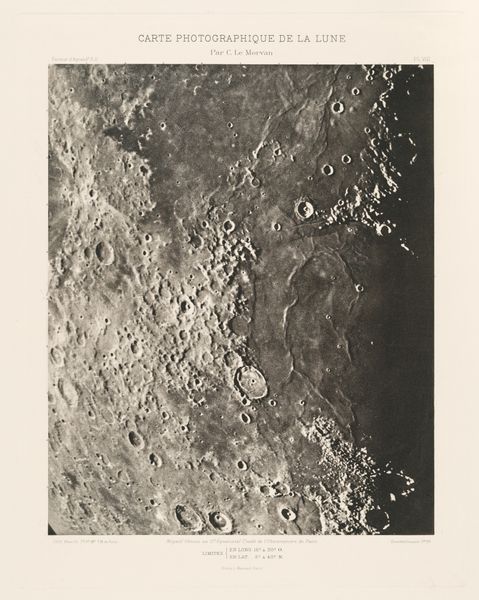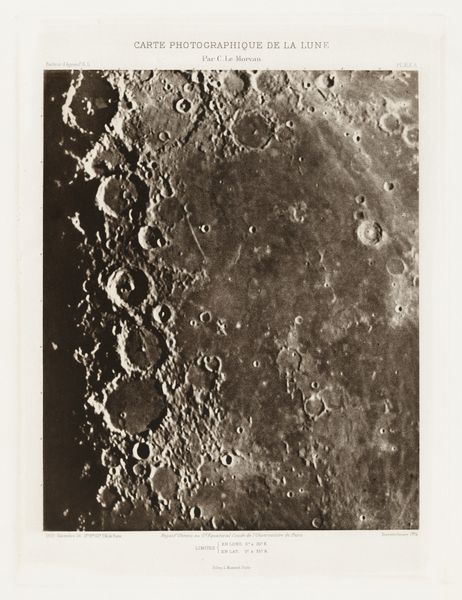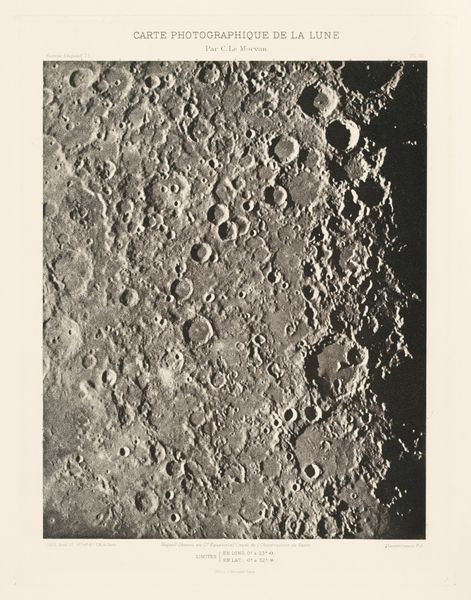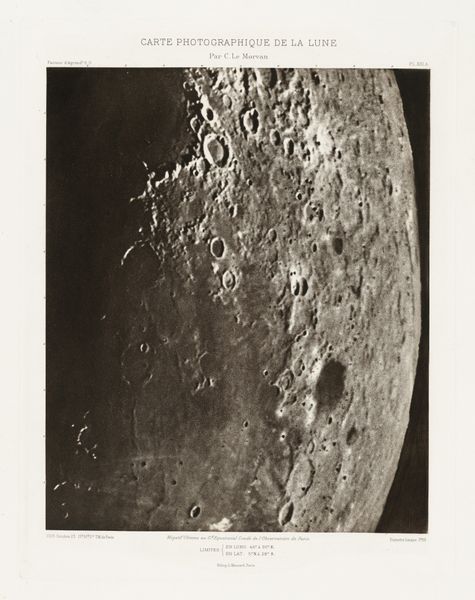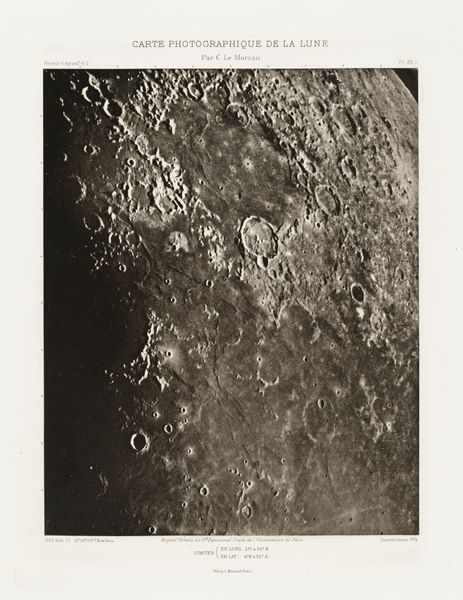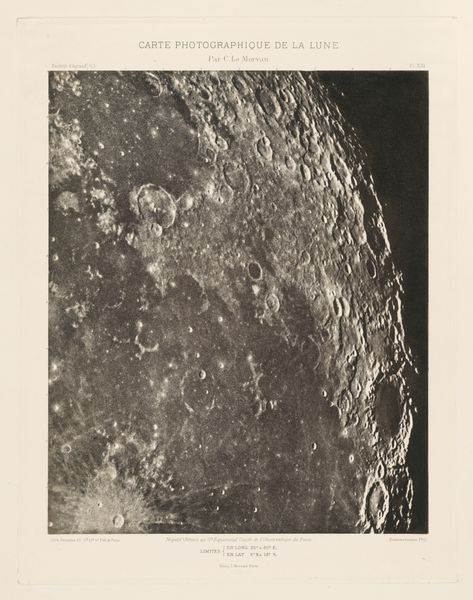
Carte photographique de la lune, planche XXIV.A (Photographic Chart of the Moon, plate XXIV.A) Possibly 1907 - 1914
0:00
0:00
print, photography
# print
#
landscape
#
photography
#
geometric
Dimensions: image: 31.1 × 25.5 cm (12 1/4 × 10 1/16 in.) plate: 38.9 × 29.5 cm (15 5/16 × 11 5/8 in.) sheet: 49 × 37.9 cm (19 5/16 × 14 15/16 in.)
Copyright: National Gallery of Art: CC0 1.0
Curator: Welcome. We're looking at "Carte photographique de la lune, planche XXIV.A," or "Photographic Chart of the Moon, plate XXIV.A," potentially created between 1907 and 1914 by Charles Le Morvan. It's a print derived from photography. Editor: My first thought? "Wow, that's a serious case of lunar acne!" It has an almost brutal honesty, all those pockmarks laid bare. Kind of beautiful, in its strange way. Curator: The photograph offered a starkly scientific perspective, as Le Morvan intended to provide a highly accurate map for astronomers, particularly those at the Paris Observatory. It’s also tied to the broader political context of scientific advancement in early 20th-century France. Editor: Right, science and politics intertwined. Still, beyond the science, there's this overwhelming sense of isolation that radiates from it. The stark greyscale enhances that, turning the moon into this desolate sphere hanging in an inky black void. It makes you wonder what secrets those craters hold, you know? What stories? Curator: Indeed. The scale too plays a role. We see the vastness of space depicted through the detailed topography, all achieved through new photography processes at the time. Its circulation highlights the shift from idealized landscapes to documented space, influencing how science engages with art and popular imagination. Editor: Okay, now that you mention "vastness," there is also something miniaturizing. For all its scope, the image shrinks us, making Earthly squabbles seem kind of…petty. I keep wanting to see tiny lunar explorers zipping around in rocket ships between those craters! It also speaks of all the unknowns… Curator: Perhaps Le Morvan inadvertently made it more poignant because of its lack of artifice and more accessible to a broader audience. It becomes a reminder of our cosmic place. Editor: You’re right, somehow he captures humanity's curiosity in one monochrome, cratered surface! A timeless image in many ways. Curator: I agree. This photographic map represents so much: scientific progress, shifting artistic sensibilities, and, ultimately, our endless fascination with what lies beyond. Editor: Well, I know where I’m aiming my telescope tonight!
Comments
No comments
Be the first to comment and join the conversation on the ultimate creative platform.

